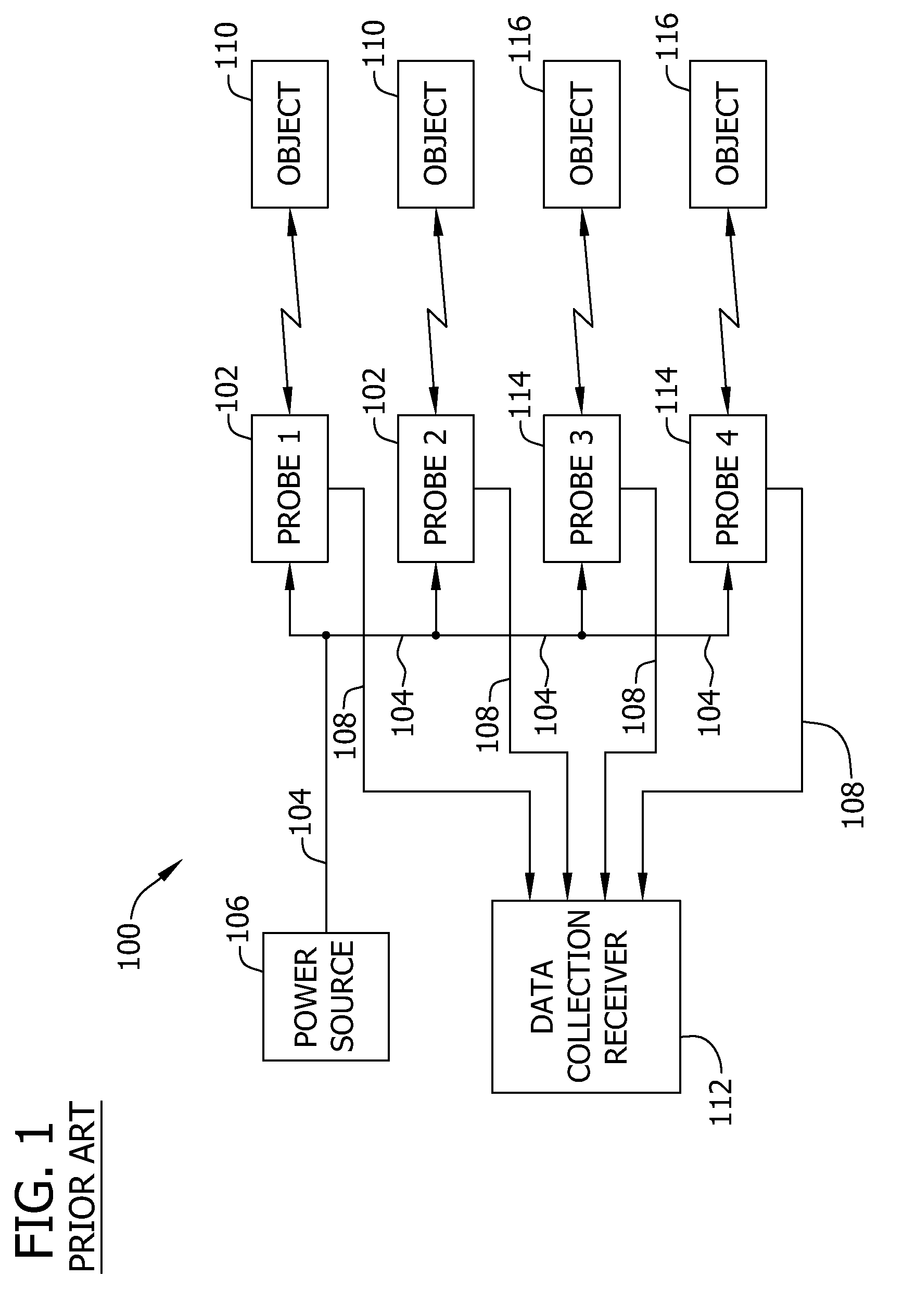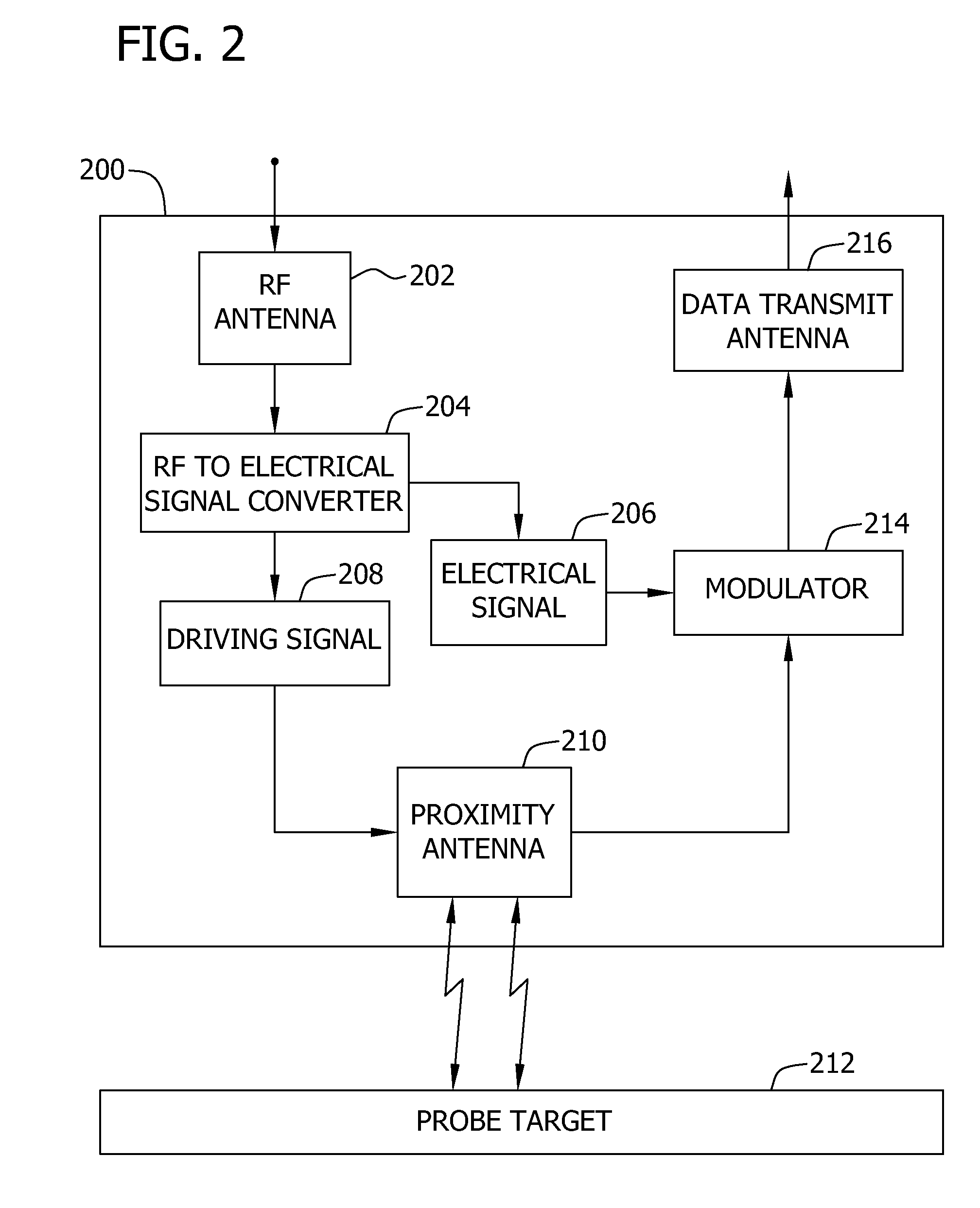Wireless proximity probe and method of operating same
a proximity probe and wireless technology, applied in the direction of direction finders, direction finders using radio waves, instruments, etc., can solve the problems of unbalanced shafts, increased mass of devices in which coils are installed, and state-of-the-art proximity probes
- Summary
- Abstract
- Description
- Claims
- Application Information
AI Technical Summary
Benefits of technology
Problems solved by technology
Method used
Image
Examples
Embodiment Construction
[0014]The present application describes a wireless proximity probe that is suitable for placement in environments where the use of wires may be problematic or inconvenient. Use of wireless proximity probes eliminates the need to extend cables to the proximity probes that are used to monitor an object. Installing cables may be time consuming, expensive, and / or difficult. As such, the present application describes a proximity probe that does not require wires for each probe, but merely uses a transmitting device coupled to a power supply, and a receiving device coupled to receive proximity measurements, from one or more wireless proximity probes.
[0015]FIG. 2 is a block diagram illustrating an exemplary wireless proximity probe 200. In the exemplary embodiment, probe 200 continuously measures and / or monitors rotating machinery components, such as, rotating machinery components in a turbine. In another embodiment, probe 200 operates non-continuously and only measures and / or monitors whe...
PUM
 Login to View More
Login to View More Abstract
Description
Claims
Application Information
 Login to View More
Login to View More - R&D
- Intellectual Property
- Life Sciences
- Materials
- Tech Scout
- Unparalleled Data Quality
- Higher Quality Content
- 60% Fewer Hallucinations
Browse by: Latest US Patents, China's latest patents, Technical Efficacy Thesaurus, Application Domain, Technology Topic, Popular Technical Reports.
© 2025 PatSnap. All rights reserved.Legal|Privacy policy|Modern Slavery Act Transparency Statement|Sitemap|About US| Contact US: help@patsnap.com



